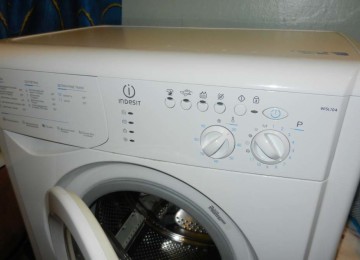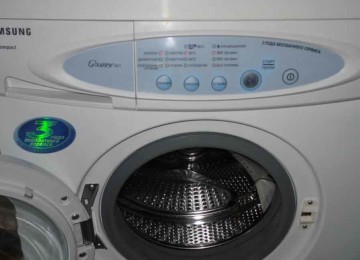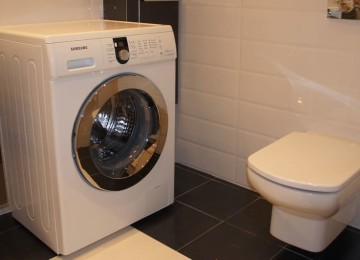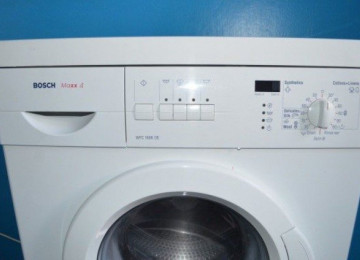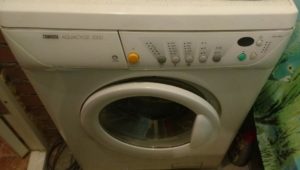 To know how to use a Zanussi washing machine correctly, you need to carefully study the operating instructions, pay attention to all the specified nuances, follow general safety rules and understand the features of each mode.
To know how to use a Zanussi washing machine correctly, you need to carefully study the operating instructions, pay attention to all the specified nuances, follow general safety rules and understand the features of each mode.
Checking the connection of the Zanussi washing machine to the sewer
Before using your Zanussi washing machine, check that it has been correctly connected to the drain. The basic rules for connecting a device are usually indicated in the instructions. However, you should make sure of the following points:
- The drain hose is raised by 70 - 80 centimeters. This prevents self-draining, excessive water consumption by the device and problems with switching to the rinse mode.
- The hose is no more than 4 meters long and is not bent too much.
- The drain pipe of the machine is securely attached to the drain of the sink or bathtub.
The instructions say that compliance with these positions is necessary for the safe, long and efficient operation of the Zanussi mechanism. If the basic rules for connecting the machine to sewerage, water supply or electricity are not followed, it will experience frequent malfunctions and breakdowns.
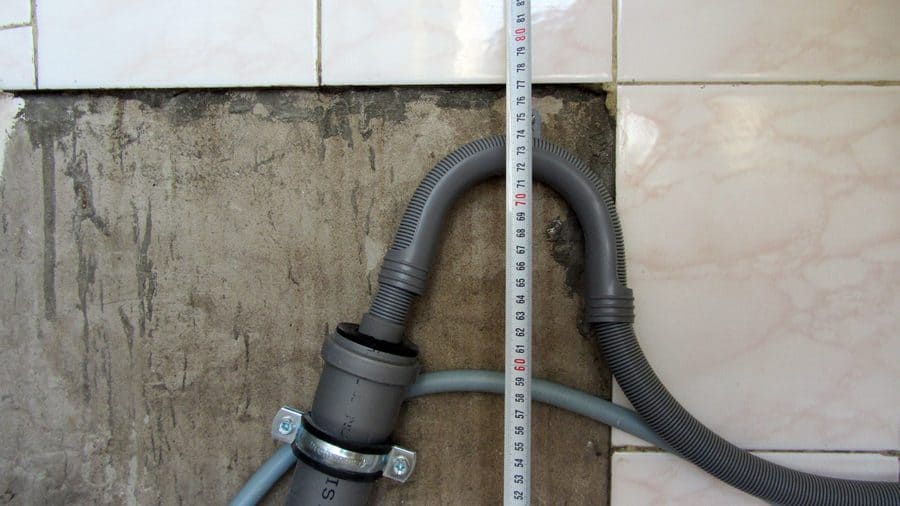
General recommendations for using a Zanussi machine
In addition to the rules specified in the instructions, there are informal recommendations for using the device. In general, among the main rules of conduct with Zanussi washing machines are the following:
- To prevent the mechanism from wearing out and to minimize the risk of breakage, try not to load the drum completely. At the same time, make sure that there is no overweight, which can also cause damage to the device.
- Do not set the temperature to high temperatures unnecessarily. This will reduce energy consumption. The optimal heating rate is 30 degrees.
- The most optimal Zanussi spin level is 600 – 800 rpm. Higher speeds have a negative impact on the bearings and seal.
- Take care of your glass. Wipe it dry after each wash, and then scale will not accumulate on it.
- Disconnect the device from the network after finishing work. This way you will protect the power supply from overheating and significantly extend its service life.
- Also, do not forget to “ventilate” the device. After turning off the device from the power supply, always open the powder container slightly for 15 - 20 minutes.
- Don't forget to clean your Zanussi machine. Once every few months, run a dry wash by pouring a special anti-scale agent into the dispenser. The operating temperature, according to the instructions, should be maximum.
Basic washing steps
Before starting the washing machine, it is necessary to check the condition of the tap providing water supply. Then connect to the power supply and place the necessary items into the drum.
The next step will be to determine the required mode. As mentioned earlier, for this you need to take into account the nature of the material from which the thing is made.At the initial stages of working with the device, it is recommended to have instructions with all the prescribed characteristics of Zanussi programs. Over time, the choice of modes will occur almost intuitively. After that, pour powder, conditioner and stain remover into the detergent container.
The last step will be to select a mode or set all the main indicators manually using the rotary selector. If necessary, you should select additional options. After that, press the “start” button as indicated in the instructions.
Basic programs of a Zanussi washing machine
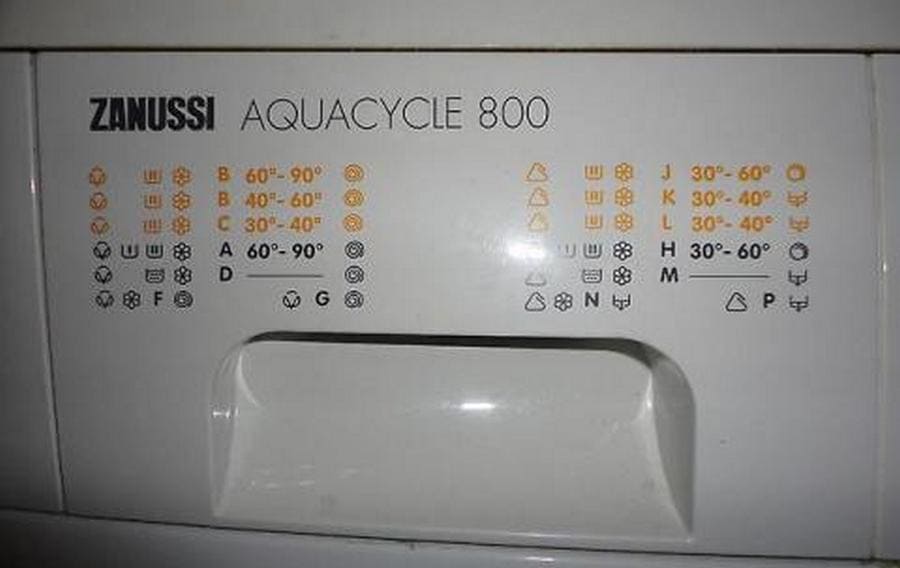
Zanussi washing machines are characterized by a wide range of modes. Usually they are all spelled out in the instructions, but it’s still worth taking a closer look at the features of the basic programs, including:
- Cotton. For white and colored cotton items: clothes, towels, bed linen and underwear. Heating occurs to 60 - 95°C, things go through three stages of cleansing, and the process itself takes from 2 to 3 hours.
- Synthetics. Products made from this fabric: linen, tablecloths, napkins, blouses, require low temperatures - 30-40°C and can be washed in an hour and a half.
- Handwash. Designed for very delicate and thin fabrics and suitable for knitted materials, tulle, organza, satin. Warming up is minimal and there is no spin.
- Daily wash. Refreshes laundry in half an hour and provides a high speed of rotation.
- Removing stains. Aimed at effective removal of contaminants and involves the use of a stain remover.
- Intensive For removing tough stains and dirt. Maximum heating temperatures are used.
- Silk and wool. The most gentle and gentle modes with a minimum number of revolutions and no spin.
- Energy saving. Supplement to the basic Zanussi mode. Reduces the heating rate of the washing machine and saves electricity.
- Children's. Uses a large amount of water during rinsing.
- Shoes. Cleaning occurs at a temperature of 40 ° C, goes through three rinsing stages and is distinguished by a large number of revolutions.
- Night mode. Occurs quietly and with minimal energy consumption. Spinning is switched on manually as indicated in the instructions.
- Disinfection. Used to eliminate germs, mites and allergens.
- Blankets. The mode is designed for cleaning items with fillers.
- Extra rinse. Is an addition to the basic programs of washing machines and ensures better removal of detergent residues.
- Jeans. Designed for denim and fights fading and shedding.
- Forced drain mode. Usually used for night washing.
Tips for washing clothes
In addition to choosing the right mode and following the operating instructions for your Zanussi washing machine, you must adhere to the following rules for washing clothes:
- Pre-separate items by color and type.
- Read all instructions on the labels.
- Button, lock, or snap clothes before loading them into your Zanussi machine.
- Remove old and stubborn stains with a stain remover first.
- Do not put bras, or items with rhinestones, beads, or other small parts into the drum.
- When loading a large item, add a few more small items to the drum. This will equalize the centrifugal force.
- Use conditioners and softeners. Then the service life of your Zanussi will be much longer.
Error codes for Zanussi washing machines
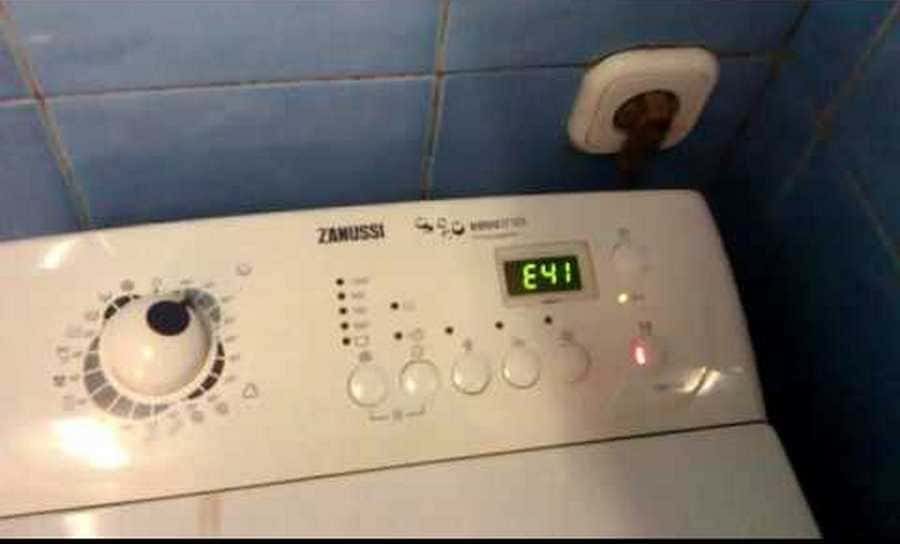
The advantage of Zanussi washing machines is their ability to inform the user about the cause of the malfunction. To determine the breakdown, it is enough to decipher the code shown on the display.
- E11 – no liquid entering the tank;
- E13 – liquid gets into the bottom of the washing machine;
- E21 – water does not leave the tank at the end of the mode;
- E23 – the triac has burned out (a semiconductor part responsible for the state of the pump);
- E24 – the track from the triac of the washing machine is damaged;
- E31 – machine pressure switch is faulty;
- E32 – problem with the calibration sensor responsible for pressure;
- E33 – malfunctions in the liquid level sensors of the washing machine;
- E34 – discrepancy between the pressure switch and the anti-boiling indicator;
- E35 – excess water level in the washing machine;
- E38 – pressure difference not recorded;
- E40 – the washing machine hatch is open;
- E42 – the blocker needs to be replaced;
- E54 – the contacts of the washing machine relay are “stuck together”;
- E55 – problem with the electrical connection of the engine;
- E57 - the current of the washing machine system exceeds 15A;
- E61 – heating does not occur at full strength;
- E62 – overheating during machine operation;
- E68 – grounding in the heating element circuit;
- E69 – a problem with the heating element of the washing machine;
- E71 – problems with the resistance level of the machine’s temperature sensor;
- E74 – the location of the machine’s temperature sensor does not correspond to the norm;
- E84 – the recirculation pump is not recognized;
- E85 - problems in the electronic unit of the car;
- E91 – there is no connection between the user interface and the main unit;
- E92 – failure in the configuration of the washing machine;
- E5C – machine voltage is too high;
- EC1 – filling valve is blocked;
- EC2 – failure of the sensor that detects turbidity;
- E5F – inverter board error;
- EF1 – the machine takes too long to drain;
- EF1 – absence of flow signal;
- EA3 – DSP does not fix the electric motor pulley;
- E5F – engine does not start;
- E84 – recirculation pump is not recognized;
- E9A – problems in the car’s sound supply system;
- EB1, EH1 – frequency in the power supply network has been exceeded;
- EF3 – there is a leak inside the washing machine;
- E5F – configuration parameters of the FCV control board are violated;
- EF5 – spinning clothes in the washing machine drum does not start.
This section discussed only some of the possible errors that occur when operating Zanussi washing machines. A wider list with a detailed description of the causes of problems and ways to deal with them is in the instructions supplied with the product.
General tips for working with Zanussi washing machines
Zanussi washing machines are durable and reliable. Their main advantages are the ability to work in accelerated or silent mode, the presence of programs that provide delicate cleaning of children's things, energy saving and disinfection. The company also provided consumers with the ability to quickly determine the cause of problems using codes displayed on the display.
The causes of breakdowns and emergency situations are often non-compliance with the rules and recommendations specified in the instructions, incorrect installation or frequent power failures.






